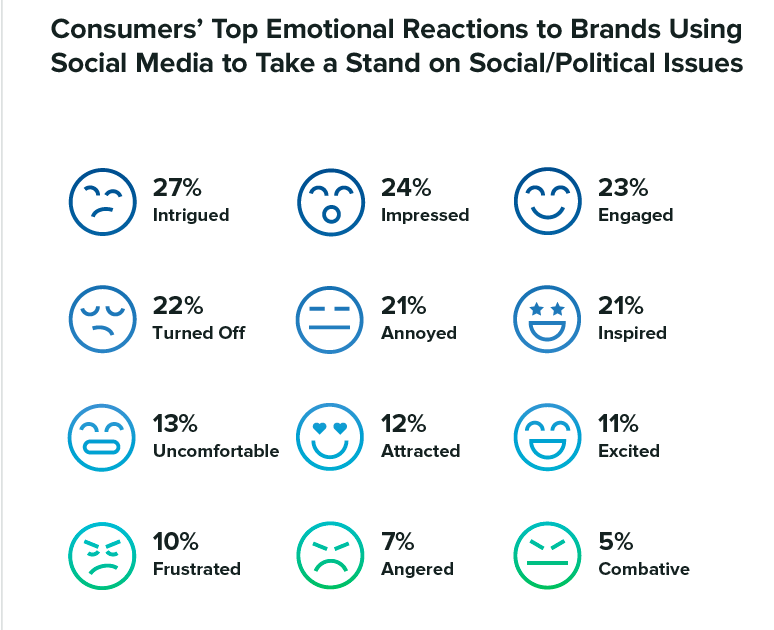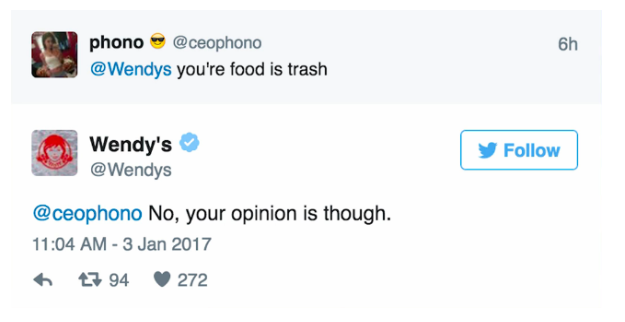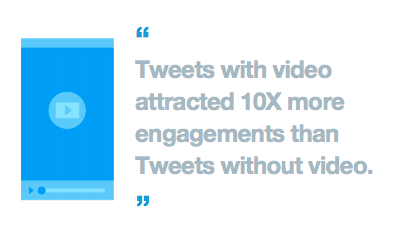Twitter recently released its Twitter Agency Playbook for 2018.
While it’s aimed at agencies, it’s chalk full of Twitter gold.
Here are the highlights you can use to improve your Twitter campaigns.
Twitter Tip #1: “Pay to Play”: Organic and Paid Work Together
This one doesn’t come as much of a surprise.
With social platforms making major pushes to increase the overall user experience and upping the ante on their algorithms (I’m looking at you, Facebook), it seems no channel is safe for purely organic posts.
Twitter emphasizes that “the brands who seem to be the most organically successful on Twitter actually have huge Twitter Ads budgets and are creating a mix of organic and paid content.”
And it makes sense. Twitter continues:
“People organically follow accounts with growing and active audiences. Running a followers campaign attracts more followers and having more followers also attracts more followers.”
See, brands can no longer hope to simply post often and be found.
While the platform used to operate on a reverse chronological order, in 2016 Twitter introduced “algorithmic timeline.”
Now, the tweets users see are ranked “using a variety of signals, including how popular it is and how people in your network are interacting with it,” according to Twitter.
In a nutshell: finding quality followers is hard than ever.
Unless, of course, you run ads.
Because like Twitter said, we’re social proof animals: the more followers you have, the more followers you’ll attract.
And to get those followers, you need to run some ads.
But your paid options aren’t limited to individual Tweets; in fact, it pays to promote your account as well.
Eighty-five percent of Twitter users who follow small businesses said they believe Promoted Accounts help them discover new businesses, and 68 percent have followed a small business after seeing their Promoted Account.
Bottom line: if you have big Twitter plans, you need paid campaigns.
Twitter Tip #2: It’s Not Just an Ideal Combo For Follower Growth
In its Playbook, Twitter makes it a point to emphasize that the organic/paid combo extends to all objectives on Twitter, not just upping your follower count.
Specifically, if you’re trying to run a viral campaign, you’ll need to put a few dollars behind it.
I know – when you think viral, you like to think of some purely organic, off-the-cuff tweet or video that happened to catch the country’s (or world’s) attention.
But truth is, most brands don’t have the luxury of having Ellen DeGeneres run their tweets.

Twitter tip: promote Tweets to help them go viral (even without Ellen)
Instead, creating viral content is often strategic, and takes a lot of work.
A viral tweet requires a combination of perfect timing and subject matter (and, okay, a little luck).
Another requirement? Lots of eyes.
You need your viral to reach as many people as possible, and you need those people to engage with it.
Luckily, people don’t hesitate to engage with ads on Twitter.
Overall ad engagements increased 99% year-over-year in Q3 2017, “driven by a continuing mix shift toward video ad impressions as well as higher CTR rates across all ad formats on a like-for-like basis.”
Even better, most users don’t mind being served ads (especially video ads) on Twitter, and in fact most find them informative.
So don’t be afraid to put some promotion behind a Tweet you think has viral potential.
Twitter lays it out pretty succinctly: “Brands have to put money behind their Tweets for them to go viral…promoting a powerful Tweet can give it the initial momentum it needs to attract a lot of organic attention.”
Twitter Tip #3: Time is of the Essence
Even though Twitter got rid of its purely reverse-chronological ranking order, timing is still crucial when it comes to Twitter.
See, Twitter views itself primarily as a news site, which means it prioritizes Tweets of the here and now.
In the Playbook, they tell us that “timely campaigns that comment on current trends or events — anything happening now — are a better fit for Twitter than anywhere else.”
They’re a better fit for Twitter’s algorithm, too.
So as a brand, your job is to stay on top of current trends that could be relevant to your audience.
Girl Scouts did that with the #MeToo movement.

Twitter Tips: capitalize on timeliness
Because the two intertwine on many levels, Girl Scouts was able to utilize the movement in a tasteful, on-topic way.
But as always, exercise caution.
Sprout Social launched a #BrandsGetReal survey and found that not everyone is keen on brands who get involved in political or social movements. In fact, 21% were turned off by it.

Twitter tips: be wary of politics and social movements
All that means is you need to have a good grasp on your target audience, know what kind of brand you want to be and what kind of content your audience wants to see.
Additionally, Twitter suggests using the platform to:
- Start conversations – get feedback, start conversation chains, and put an emphasis on customer service
- Control – use Twitter to control the conversation around a subject. Include breaking news, product launches, new promotions, etc.
- Back talk – use wit and sass, and don’t be afraid to take risks
Twitter Tip #4: Develop Your Personality
Here’s a pretty cool one.
I know we’ve all heard that social media is the place for some personality, but how many Twitter accounts have you seen that exist solely to tweet out articles and news related do their niche?
From brands, probably way too many.
But here’s the thing: you put a lot of work into developing your brand image, your value proposition, and your brand’s buyer persona – but what about your brand voice?
Here’s what Twitter has to say about it:
“Use Twitter when your campaign has an edge to it. Twitter is the perfect place for that creativity, especially if it has an element of wit or sass. The brands that attract the most engagement on Twitter are often the ones that were willing to take a few risks and prioritize humor, speed, or entertainment value over consistency and caution.”
Basically, they’re saying some information isn’t meant for a Twitter audience, and that’s okay.
You don’t have to go as far as, say, Wendy’s.

Twitter tips: sometimes, it’s okay to back talk
They’ve actually solidified their presence on the platform through their quick-witted, envelope-pushing responses, but it’s easy to see how that approach might not work for every business.
Instead, look at examples like Casper. The mattress company sets itself apart through a little sass, and a surprising amount of sleep science.

Twitter Tips: don’t be afraid to use humor
Or, take Flo from Progressive.
The insurance company created an entire avatar to speak for them. She’s the face and the voice of Progressive, and there’s a reason she’s still around.

Twitter tips: develop a strong brand identity
For you, that means taking the time to analyze your brand. What words describe you? Playful, witty, thought-leader, expert?
You also need to consider your target audience. If you cater to millenials, you can likely get away with a little more than if you’re talking strictly to older professionals.
Twitter Tip #5: Fully Optimize Your Account
This one seems like a no-brainer.
But Twitter’s reinforcing it for a reason: an optimized account performs better.
That starts, of course, with your profile.
Here are a few key takeaways from Twitter:
- In the website field, enter the URL of the page you want people to visit now. This might not be your homepage; it could be a link to your most recent blog or new product line.
- Keep your bio simple and clear. Answer the question “Why would I follow this account?”
- Make all visuals clean and clear. Profiles are circles now! That means many pages will need a profile picture makeover
- Your header image is a “visual representation of what you want people to focus on this quarter (your current new campaign, an upcoming release, a picture from your most recent photoshoot that nails your current ~vibe~, etc.). Update this each season to keep it fresh and interesting.”
- Used your Pinned tweets wisely. It should be what you want your audience to focus on this month. Twitter recommends checking back each month and analyzing if there’s a more pressing message; it should be the answer to the question “what’s new?”
One last tip: remember that a Twitter Ads account is separate from your main Twitter account.
Which means if you plan on running ads through Twitter, you’ll need to create and get approval for an Ads account. Do this a few weeks before you plan to run an ad campaign to ensure you’re approved in time.
Twitter Tip #6: The Art of the Tweet
Not all Tweets are created equal.
But to ensure yours are as good as they can be, it’s important to keep a few things in mind.
First of all: video. Use it.
Video’s earn a crazy amount of engagement, and Tweets with videos are 6x more likely to be Retweeted than Tweets with photos.
Just remember, best video SEO practices apply here.
Because it is by nature a more silent social channel, remember to include subtitles in all your videos.
Get your branding and message across in the first few seconds – they’re the ones that count the most – and try to keep the entire video within one minute.
If a video isn’t in the cards for you, an image is your next best bet – if you have a GIF on hand, even better.
And now for some of the biggest news to come out of the Twitterverse in quite some time:
The platform recently doubled its historic 140 character count to 280.
It’s big news, but it’s not necessarily great news for brands.
Twitter’s always been about the art of the short, concise Tweet. And generally speaking, shorter, more engaging Tweets do better.
As a rule of thumb, always try to get your message across in as few words as possible. Remember, your goal on Twitter is usually to have your user’s click through to your website, YouTube, landing page, etc.
So treat your Tweet like a teaser. Intriguing and to the point.
Which brings us to another Twitter staple: hashtags.
Twitter recommends only using hashtags if you’re trying to link your Tweet to a broader conversation, event, or movement.
Use two per Tweet at max, and don’t include any if your goal is for users to click somewhere else (a link, for example).
Last up here: remember, who you’re following can be almost as important as who’s following you.
Look for good, quality Twitter accounts, and analyze what they do right. Which Tweets create the most engagement and why?
Beyond that, it’s crucial to master the art of the Retweet.
Here are Twitter’s Retweet takeaways:
- Retweet something if you want to make a point but don’t want to say it yourself
- Retweeting adds value to your followers
- Retweeting saves time
- Retweeting creates a positive relationship with other accounts
Twitter Tip #7: Pick the Right Ad Campaign Type
The cool thing about online advertising? You can target your ad types and campaigns based on your business goals.
The less cool thing? A lot of businesses aren’t aligning their campaigns and goals properly.
With Twitter, you can choose between five ad campaign objectives: click-throughs, Tweet impressions, Tweet engagements, followers, and video views.
Different campaign types support different objectives, and it’s important to be aware of the key metric for each.
Here’s a rundown of the different Twitter campaign types and when you should be using them:
- Followers campaign: grow an audience; measured through follower count increase
- Website clicks or conversions: bring more people to your account, measured by click-throughs (CTRs)
- Awareness campaign: put your Tweets in front of as many people as possible: measured by Tweet impressions
- App installs campaign: get people to download your app; measured by CTR
- App Re-engagement campaign: get returning users to update app; measured by CTR
- Tweet engagement campaign: attract more engagement; measured by Tweet engagements
- Video views campaign: attract a larger audience to view your video; measured by video views
- Quick Promote campaign: promote a single Tweet; measured by Tweet impressions
- Twitter Promote Mode: automatically promotes Tweets from your profile; measured by follower growth and Tweet impressions

Twitter Tips: choose the right campaign type
Of course, Twitter realizes that in most cases, businesses have more than one singular goal:
“Most advertisers want their accounts to grow in multiple ways — more Retweets AND more followers, or more website clicks AND more video views. This is a healthy way to approach Twitter. But advertisers must concurrently run several different campaign objectives to achieve those different goals. If they aren’t willing to invest in multiple campaigns, then they need to de-prioritize one of their growth goals.”
And there you have it.
If you’re like most businesses, it will take multiple campaign types to achieve your goals.
That doesn’t mean you have to do it all at once (though you certainly can.)
Instead, try launching an Awareness campaign first and see how many people you’re able to reach.
If that goes well, try a Followers campaign to up your follower count, and then an Engagement campaign to start conversations with those followers.
Twitter Tip #8: Set Your Campaign Up For Success
Identifying the correct campaign type is only half the battle.
The rest is all about execution.
But the real truth of the matter of this: what works best for you can only truly be determined by you.
Over time and through trial and error, you’ll begin to determine your own set of best practices, based on your unique business model and the needs of your target audience.
But you might not be there yet. And that’s okay, ‘cause you gotta to start somewhere, right?
So start here.
Twitter put out some great tips regarding ad optimization, and here are a few of the highlights:
- Make everything mobile friendly – over 93% of Twitter’s video views come from mobile devices
- Emphasize urgency – this is a proven psychology tactic here; by making things seems limited or creating a clear deadline, users will be more likely to want something – fast. Phrases like “today only!” and “Don’t Miss Out!” are great for ads.
- Experiment – and check back often. Try different ad goals, targeting options, and bids to find the right it. And don’t forget to check your analytics as your campaign runs to be alerted to any possible snags
- Ask questions. By social media standards, Twitter’s audience is extremely engaged, so make the most of it by asking questions and responding to any replies.
Twitter Tip #9: Take Advantage of the Numbers
There’s no way to know exactly how a Tweet will perform.
There are, however, a few stats to point you in the right direction.
- Tweets published between noon and 10pm local time gain more engagement than Tweets outside of that window.
- Monday is the most popular day to Tweet.
- Tweets with hashtags gained 100% more engagements than Tweets without them.
- But remember, don’t overdo it: 1-2 hashtags perform best. Any more than that and engagement typically begins to decline
- Tweets with a GIF gained 55% more engagement than Tweets without a GIF.
- Tweets with video attracted 10X more engagements than Tweets without video.

Twitter tips: use videos
Wrapping Up Twitter Playbook Tips
Twitter’s recent release is full of great tips for brands, and if you haven’t already, check out the full version here.
Remember, these are all tried-and-true tips straight from the horse’s (or in this case, Twitter’s) mouth.
Personally, I’d be inclined to follow their advice.
